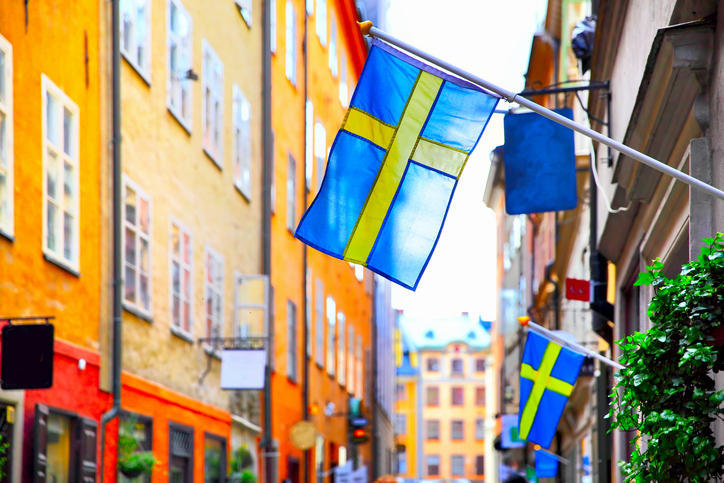Think Working From Home Won’t Hurt Your Career? Don’t Be So Sure
Many companies are letting employees stay home some or all of the time, but workers who frequent the office might get ahead.
Employees of accounting firm Dixon Hughes Goodman showed CEO Matt Snow that they could be productive at home during the pandemic. So, last fall, the company declared “hybrid” the new normal and made the office optional on most days.
This month the firm merged with a larger one whose staff shows up in person more often—and whose chief executive became CEO of the combined business, Forvis. Some of the blended company’s 5,400 total employees are now meeting new colleagues who could dictate future promotions and raises.
Sounds like a good time to get back to the desk.
“If you want to be a managing partner, you’re probably not going to do that working one day a week in the office, and I think people get that,” says Mr. Snow, who is now Forvis’s chairman. Employees still can work from home much of the time, he notes, but there may be trade-offs.
Hybrid workers, beware: There can be a gap—sometimes a wide one—between what’s required and what it really takes to succeed.
Office hard-liners like Tesla CEO Elon Musk have made clear that “a minimum of 40 hours in the office per week” is the only way to thrive, or even survive, at his company. The leaders of Goldman Sachs, Morgan Stanley and JPMorgan Chase also don’t hide their disdain for remote work.
While telecommuting may be fine in certain roles, people in the upper ranks “cannot lead from behind a desk or in front of a screen,” JPMorgan CEO Jamie Dimon wrote in his annual shareholder letter this spring.
Yet other businesses are promising “hybrid equity,” insisting some employees can enjoy the conveniences of working from home without compromising their ambitions.
HubSpot, a Boston-based digital marketing firm, plans to track promotions in the coming years to ensure people who rarely visit the office aren’t disadvantaged, says Katie Burke, chief people officer. Citigroup requires three days of office work per week, and human resources head Sara Wechter says those who log only the minimum will have an “equitable opportunity to develop and advance their careers.”
It’s a dream for many workers, but it could be pure fantasy unless companies are vigilant, according to career coaches and researchers who say people in the office are more likely to get noticed and rewarded. A 2020 study of more than 400 tech workers by researchers at Rensselaer Polytechnic Institute and Northeastern University found that while remote and non-remote workers won roughly the same number of promotions, the salaries of remote workers grew more slowly. At companies where remote work was less common, telecommuters won fewer promotions.
Sure, you can hit your performance targets from the kitchen table and wear out the “raise hand” button on Zoom. But a colleague who chats up the boss when the meeting is over and goes for a drink after hours may get ahead.
There’s a term for this.
Proximity bias (präk-ˈsi-mə-tē bī-əs) | noun
1. A tendency to favour people in close proximity to you
2. Human nature and the way things have worked in business since forever
It’s certainly possible to progress while working from home most or all of the time, especially in today’s tight labour market, and not everyone aspires to climb the corporate ladder to the top. Still, hybrid and remote arrangements could be vulnerable to management changes or an economic downturn—which many economists say is increasingly likely, by the way.
Businesses are hunting for leaders who can handle decentralized teams, says Bo Burch, founder of the executive search firm Human Capital Solutions in Wilmington, N.C.
Yet, “companies aren’t saying, ‘Bo, you need to make sure you present a panel of executives that have great stories to tell about how they overcome proximity bias,’” he says.
Office-goers sometimes enjoy special status even at companies that have embraced remote work. Google, Facebook, Twitter and others have allowed many employees to scatter—but warned of pay cuts for those who go remote and move to cheaper cities.
Polls show people in historically marginalized groups are among the most likely to prefer working from home, and businesses with hybrid teams should be careful not to exacerbate longstanding inequities, says Kathlyn Perez, a New Orleans labor lawyer who counsels companies on unconscious bias.
Then again, she notes remote workers aren’t members of a legally protected class in the way that women, minorities and people with disabilities are. Those who feel that infrequent office visits unfairly cost them promotions could have little recourse.
“Unfortunately, if you know that your employer values some face time, then you as an individual trying to improve your working situation and endear yourself to your boss may want to put some of that face time in,” she says.
Ms. Perez’s advice might seem obvious. Not to everyone, apparently.
Overstock.com CEO Jonathan Johnson expected good turnouts, especially among young workers, when he extended a staff-wide invitation to join him for lunch every Tuesday at the company’s Midvale, Utah, headquarters.
Total attendance over eight months: 10 people.
“Most of the time, I eat my peanut butter sandwich alone,” he says. “When I was 25, if I had a chance to eat my sandwich with the CEO, I’d have been there.”
He says he doesn’t mind letting a majority of his 1,500 employees work from home most of the time, and Overstock recently hired executives in Austin and Cleveland to demonstrate its commitment to a hybrid workforce.
Nevertheless, when Mr. Johnson and I spent almost an hour chatting in a hotel lobby recently, I asked whether his lunchmates stand out as go-getters.
“A little bit,” he allowed.
The man likes to talk in person. If I worked at Overstock and wanted to get ahead, I’d find out whether Mr. Johnson prefers Skippy or Jif and bring a jar to the office next Tuesday.
 Copyright 2020, Dow Jones & Company, Inc. All Rights Reserved Worldwide. LEARN MORE
Copyright 2020, Dow Jones & Company, Inc. All Rights Reserved Worldwide. LEARN MORE
This stylish family home combines a classic palette and finishes with a flexible floorplan
Just 55 minutes from Sydney, make this your creative getaway located in the majestic Hawkesbury region.
The remote northern island wants more visitors: ‘It’s the rumbling before the herd is coming,’ one hotel manager says
As European hot spots become overcrowded , travellers are digging deeper to find those less-populated but still brag-worthy locations. Greenland, moving up the list, is bracing for its new popularity.
Aria Varasteh has been to 69 countries, including almost all of Europe. He now wants to visit more remote places and avoid spots swarmed by tourists—starting with Greenland.
“I want a taste of something different,” said the 34-year-old founder of a consulting firm serving clients in the Washington, D.C., area.
He originally planned to go to Nuuk, the island’s capital, this fall via out-of-the-way connections, given there wasn’t a nonstop flight from the U.S. But this month United Airlines announced a nonstop, four-hour flight from Newark Liberty International Airport in New Jersey to Nuuk. The route, beginning next summer, is a first for a U.S. airline, according to Greenland tourism officials.
It marks a significant milestone in the territory’s push for more international visitors. Airlines ran flights with a combined 55,000 seats to Greenland from April to August of this year, says Jens Lauridsen, chief executive officer of Greenland Airports. That figure will nearly double next year in the same period, he says, to about 105,000 seats.
The possible coming surge of travellers also presents a challenge for a vast island of 56,000 people as nearby destinations from Iceland to Spain grapple with the consequences of over tourism.
Greenlandic officials say they have watched closely and made deliberate efforts to slowly scale up their plans for visitors. An investment north of $700 million will yield three new airports, the first of which will open next month in Nuuk.
“It’s the rumbling before the herd is coming,” says Mads Mitchell, general manager of Hotel Nordbo, a 67-room property in Nuuk. The owner of his property is considering adding 50 more rooms to meet demand in the coming years.
Mitchell has recently met with travel agents from Brooklyn, N.Y., South Korea and China. He says he welcomes new tourists, but fears tourism will grow too quickly.
“Like in Barcelona, you get tired of tourists, because it’s too much and it pushes out the locals, that is my concern,” he says. “So it’s finding this balance of like showing the love for Greenland and showing the amazing possibilities, but not getting too much too fast.”
Greenland’s buildup
Greenland is an autonomous territory of Denmark more than three times the size of Texas. Tourists travel by boat or small aircraft when venturing to different regions—virtually no roads connect towns or settlements.
Greenland decided to invest in airport infrastructure in 2018 as part of an effort to expand tourism and its role in the economy, which is largely dependent on fishing and subsidies from Denmark. In the coming years, airports in Ilulissat and Qaqortoq, areas known for their scenic fjords, will open.
One narrow-body flight, like what United plans, will generate $200,000 in spending, including hotels, tours and other purchases, Lauridsen says. He calls it a “very significant economic impact.”
In 2023, foreign tourism brought a total of over $270 million to Greenland’s economy, according to Visit Greenland, the tourism and marketing arm owned by the government. Expedition cruises visit the territory, as well as adventure tours.
United will fly twice weekly to Nuuk on its 737 MAX 8, which will seat 166 passengers, starting in June .
“We look for new destinations, we look for hot destinations and destinations, most importantly, we can make money in,” Andrew Nocella , United’s chief commercial officer, said in the company’s earnings call earlier in October.
On the runway
Greenland has looked to nearby Iceland to learn from its experiences with tourism, says Air Greenland Group CEO Jacob Nitter Sørensen. Tiny Iceland still has about seven times the population of its western neighbour.
Nuuk’s new airport will become the new trans-Atlantic hub for Air Greenland, the national carrier. It flies to 14 airports and 46 heliports across the territory.
“Of course, there are discussions about avoiding mass tourism. But right now, I think there is a natural limit in terms of the receiving capacity,” Nitter says.
Air Greenland doesn’t fly nonstop from the U.S. because there isn’t currently enough space to accommodate all travellers in hotels, Nitter says. Air Greenland is building a new hotel in Ilulissat to increase capacity when the airport opens.
Nuuk has just over 550 hotel rooms, according to government documents. A tourism analysis published by Visit Greenland predicts there could be a shortage in rooms beginning in 2027. Most U.S. visitors will stay four to 10 nights, according to traveler sentiment data from Visit Greenland.
As travel picks up, visitors should expect more changes. Officials expect to pass new legislation that would further regulate tourism in time for the 2025 season. Rules on zoning would give local communities the power to limit tourism when needed, says Naaja H. Nathanielsen, minister for business, trade, raw materials, justice and gender equality.
Areas in a so-called red zone would ban tour operators. In northern Greenland, traditional hunting takes place at certain times of year and requires silence, which doesn’t work with cruise ships coming in, Nathanielsen says.
Part of the proposal would require tour operators to be locally based to ensure they pay taxes in Greenland and so that tourists receive local knowledge of the culture. Nathanielsen also plans to introduce a proposal to govern cruise tourism to ensure more travelers stay and eat locally, rather than just walk around for a few hours and grab a cup of coffee, she says.
Public sentiment has remained in favour of tourism as visitor arrivals have increased, Nathanielsen says.
—Roshan Fernandez contributed to this article.
This stylish family home combines a classic palette and finishes with a flexible floorplan
Just 55 minutes from Sydney, make this your creative getaway located in the majestic Hawkesbury region.






















